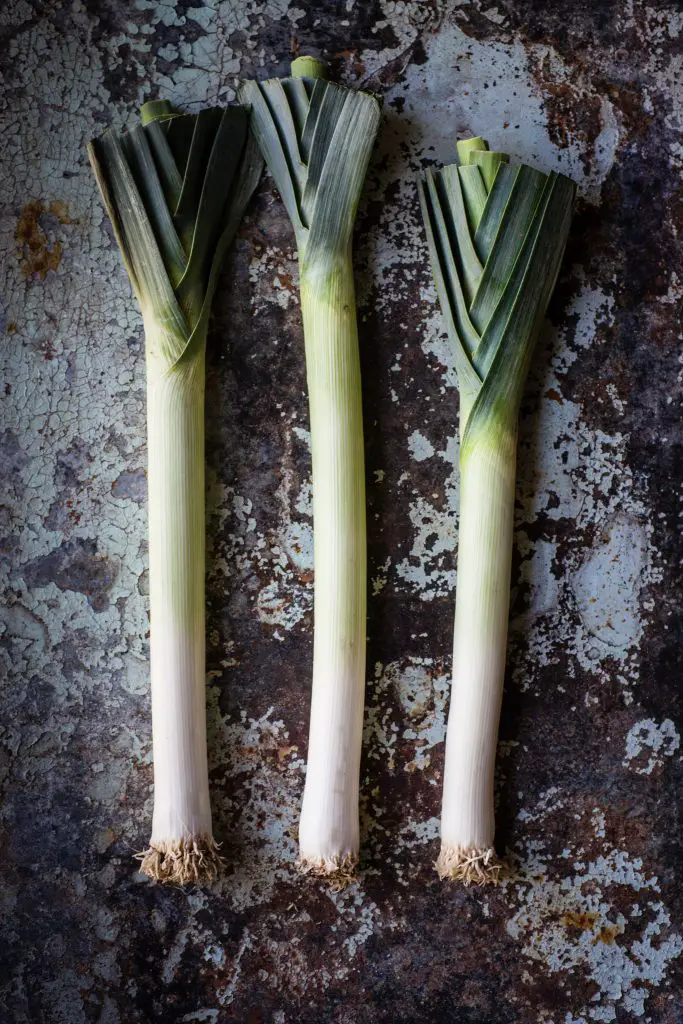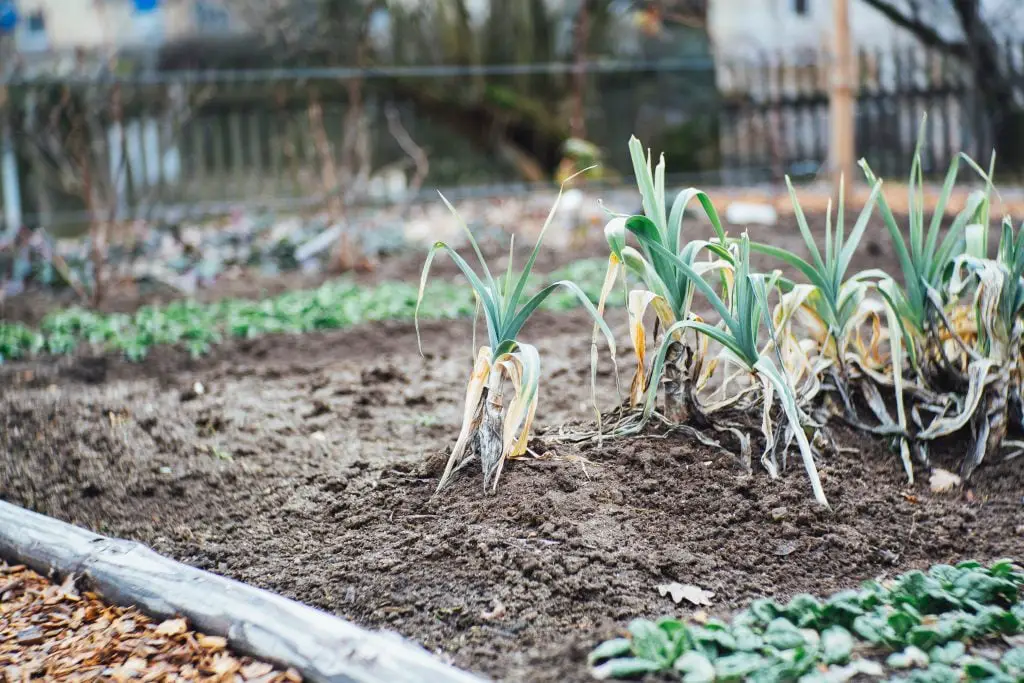Can I Eat Flowering Leeks? Leeks are a popular vegetable that can be enjoyed year-round from your garden in all but the coldest regions. However, if you live in an area where the weather is variable this can sometimes cause leeks to flower. So can you still eat leeks that have flowered?
When leeks flower the central stem can become hard woody. This texture generally makes that Leek less palatable as it ages as such it is important to harvest them ideally before the appearance of flowers, or immediately if the plant shows any signs of producing a flower head.
If you have a crop of leeks it is best to try slicing one up as that will usually give a pretty good indication of whether you are likely to be able to use the vegetable culinary purposes. However, if the leek is already too far gone the crop can still be of some value as they can be left in the ground to collect seeds for the following season.
What Causes Leeks To Bolt?
Bolting (flowering and the production of seed) is an issue for many different types of vegetable crops not just leeks. Bolting can be triggered by a cold spell or changes in day length that initiates this behavior. Bolting most commonly occurs when the plants are approaching maturity however, it can also be triggered much earlier in the right conditions.
Leeks like many other crops are sensitive to the number of hours of daylight received. The formation of flowers is initiated when day length increases and it is a natural progression for spring-sown leeks to run to seed in late summer. This also occurs if the plant is stressed due to a lack of water or excessive heat.
The Leek, under normal growing conditions, behaves as a biennial crop which means it grows in the first year before flowering and setting seed in the second year. This means that harvests should be taken within the first growing season or at the end of winter at the latest. Any leek that is allowed to sit through winter will inevitably flower in the following spring.
However, if the leeks experience unsettled weather conditions such as a prolonged cold spell followed by warmer weather premature flowering is likely. The combination of cold nights and hot days can also contribute to the premature initiation of flowering.

What Can Be Done To Reduce The Chances Of Flowering?
There are several strategies that can be implemented to ensure that a reliable, quality crop of leeks is produced. These are listed below;
- Delay sowing of seed outdoors until the temperatures are more stable.
- Sow leek seeds in modular trays and keep the seedlings indoors in a greenhouse or a heated propagation tray.
- Use cloches, row covers or horticultural fleece early in the seasn to provide additional warmth.
- Carry out successional sowings until the end of the summer as this will also help to achieve a constant harvestable supply even if the weather conditions are not favourable.
- Select bolt resistant varieties such as Giant Musselburgh.
- Water plants regularly and mulch the plants well aviod the plant drying out.
How To Grow Leeks
Leeks are a hardy frost-tolerant vegetable that can be grown throughout the year in most climates. Leeks can be sown from late winter through to late Summer, however, sowing in Autumn generally doesn’t work that well because Leeks need to reach a reasonable size prior to the weather cooling down.
If the plants are sown too late the leeks will remain small during winter and then only start to grow in spring where the probability of the plant bolting is increased. A delay of just a few weeks in late summer can have a significant impact on this.
Leeks can be sown directly into the garden or into modular trays. However, we recommended that you start Leeks in modular trays as there are several advantages. The first is that it reduces the time that the leeks spend in the ground which creates space in the garden for other things to be grown.
The second key advantage is that it allows the leeks to be sown in clumps (sometimes referred to as multi-sown). Multi-sowing is a method that goes against conventional garden wisdom but has been shown by Charles Dowding to be extremely efficient with respect to time and space.
Multi-sowing allows a larger number of plants to be grown in a given area and also saves a lot of time when it comes to transplanting vegetables into the garden. This is because several leeks are transplanted when a single plug is placed in the ground.
For Leeks, the number of plants per clump recommended by Charles Dowding is 4 to 5. Any more than that in a clump will affect the size of the Leeks. To ensure the target number of plants per cell is achieve sow 5 to 6 seeds per module. This usually means that you will get at least 4 viable plants per clump and additional plants can be thinned out, prior to planting. If you want to learn more about multi-sowing, click on the link here or watch the video below.
Once planted seedlings should reach a reasonable size after 4 to 6 weeks and will be ready to be planted out. However, leeks, due to their growth habit are extremely forgiving with respect to the timing of transplanting and can be held in the trays for much longer than that, if required.
Once the seedlings are ready to plant out into the garden the clumps should be spaced 30cm (12 inches) apart. This spacing may seem wide however this makes maintenance easy as a Dutch Hoe to be used between the clumps to remove the weeds, which largely negates the need to hand weed.
In terms of location Leeks, like most vegetables prefer a sunny location that receives at least 6 to 8 hours of direct sunlight per day, however, they will tolerate part shade. The soil should be rich, moist, and free-draining. If the soil is lacking nutrients compost may be added.
When applying compost it best to apply it to the surface of the ground so it can act as both a soil conditioner and a mulch. A layer of 2 to 3 inches is ideal.
Apart from this initial soil preparation Leeks will require very little maintenance. They only need to be watered from time to time and kept free of weeds. The only additional step that may be considered is blanching of the stem to create those white tips. To achieve this affected light needs to be excluded from the base of the plant. This is best done using straw rather than soil as the soil can make the leeks gritty. To read more about this click here.

How To Store Leeks
As Leeks are highly resistant to the cold they can remain ground until required throughout winter and picked as needed. It is only necessary to remove Leeks from the garden at this time of year if the soil becomes too wet, as there is a risk the roots could rot.
In warmer parts of the year, leeks can be stored in the refrigerator for up to a month. To maximize the shelf life it is best to avoid storing them next to Ethylene gas-producing fruits, such as Apples and Pears, as this will accelerate the ripening process. If long-term storage is required, they can be stored unwashed in a cardboard box in a cool, dark, and dry place. In these conditions, the Leeks will last a few months.
